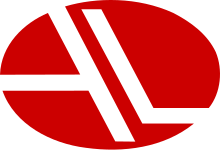Autolatina
Autolatina is the name of a strategic alliance that the automotive groups Volkswagen and Ford entered into at the end of the 1980s due to the poor economic situation in South America and which lasted until 1995.
Establishment of Autolatina
On July 1, 1987, Ford and Volkswagen , as a possible preliminary stage of a merger, created the company Autolatina for the Brazilian and Argentine markets. The joint venture was publicized by the two companies in the press, radio and television.
Originally, the legal and economic processes of the Autolatina founding were supposed to be completed in 1987, but the project was delayed until 1990. VW held 51% of Autolatina shares, Ford 49%.
The basis of the business was the following:
- Autolatina should be a holding company under which VW and Ford should keep their respective brand identities
- The VW dealers should continue to provide sales and service of their own products, as well as Ford sales and service of the corresponding products
- It was not a merger of the two companies, but an operational agreement that was to benefit both sides and customers
The market in Brazil in the eighties
The idea of a collaboration between Ford and VW was due to the situation in the Brazilian auto industry in the second half of the 1980s. The Brazilian market was in decline and manufacturers there made little effort to export their cars to the rest of the South American markets. To make matters worse, companies in Brazil had to pay high corporate taxes. Both companies were in a serious crisis in the 1980s. Before Autolatina was founded, VW held a market share of 34% in Brazil, while Ford had 21%. Together, the companies came to almost 60% in Brazil and 30% in Argentina.
In theory, in the wake of the approaching globalization, such an agreement was an excellent idea and was mutually beneficial. In practice, Autolatina has struggled with numerous problems in its seven years of existence. First of all, in view of the global competition between the two groups, there was a certain mistrust and they were reluctant to let each other know about their own plans, which put the local companies in an uncomfortable position. On the other hand, there were constant tensions between Autolatina and the various Brazilian governments, as the latter either repeatedly either froze prices or did not counter the high inflation in the country. Furthermore, product planning at both companies proceeded as if Autolatina did not even exist. The Autolatina did not act as a unit, which harmed both Ford and Volkswagen.
Common models
As part of the Autolatina, several models were created by attaching the other brand emblems ( badge engineering ): Volkswagen produced the Santana as Ford Versailles and Ford Galaxy (Argentina), the estate variant Quantum as Ford Royale . In return, Ford built the Escort- based VW Logus and VW Pointer .
VW had already taken over the South American activities from Chrysler and continued to produce the Dodge 1500 , which was derived from the former Hillman Avenger , as the VW 1500. The sedan generated 45 kW (61 hp) from a 1.5 liter displacement. In VW Carat GS a 1.8-liter engine worked with 71 kW (96 hp) and in the CD Carat a 2.0-liter engine with 73 kW (99 hp) was installed. The VW Gacel , which is strongly based on the Brazilian VW Voyager , was also available with a 1.8-liter or a 1.6-liter four-cylinder with 56 kW (76 hp).
Other models were the Ford Verona and the VW Apollo .
As early as the early 1990s, both sides questioned the benefits of the joint venture. Volkswagen, for example, was worried by the great success of the Fiat Uno Mille and wanted to offer a joint model in the small car segment. Ford, on the other hand, pursued its own plans here, as the later introduction of the Ka proved.
Another example: the VW engineers wanted to renew the VW Gol , but Ford did not want to provide the corresponding investments; because Ford had its own intentions with the Escort range. Furthermore, VW did not hide the fact that the market shares that their own cars gained were lost at Ford. Overall, however, both groups lost to the competition, which was intensified by the opening of the Brazilian market and the arrival of further competitors.
The end
When the economic situation slowly improved at the end of 1994, it was decided to dissolve Autolatina with effect from March 1995. The separation took place in a friendly atmosphere, people spoke of different philosophies and business strategies. Autolatina employees could choose whether they wanted to be taken over by Ford or VW, regardless of where they originally came from. This is how a number of former Ford managers came to VW and vice versa.
The question still to be resolved was what should be done with the models in which both companies had a share (e.g. the Escort with VW engine) and with the models that were produced in the factories of one group for the other ( such as the VW Logus manufactured by Ford). Therefore, the Autolatina termination agreement provided for a clause according to which these models had to be kept alive by the other group for another year. After that, the companies were allowed to use the production capacities for their own purposes.
literature
- Leila PALE. De volta ao futuro: o discurso empresarial e sindical no fim da Autolatina. São Paulo, Educ / Cortez / Fapesp, 2001.
- Luiz Carlos DI SERIO. Tecnologia, inovação e competitividade: o caso Volkswagen do Brasil. São Paulo, FGV, 2000.

